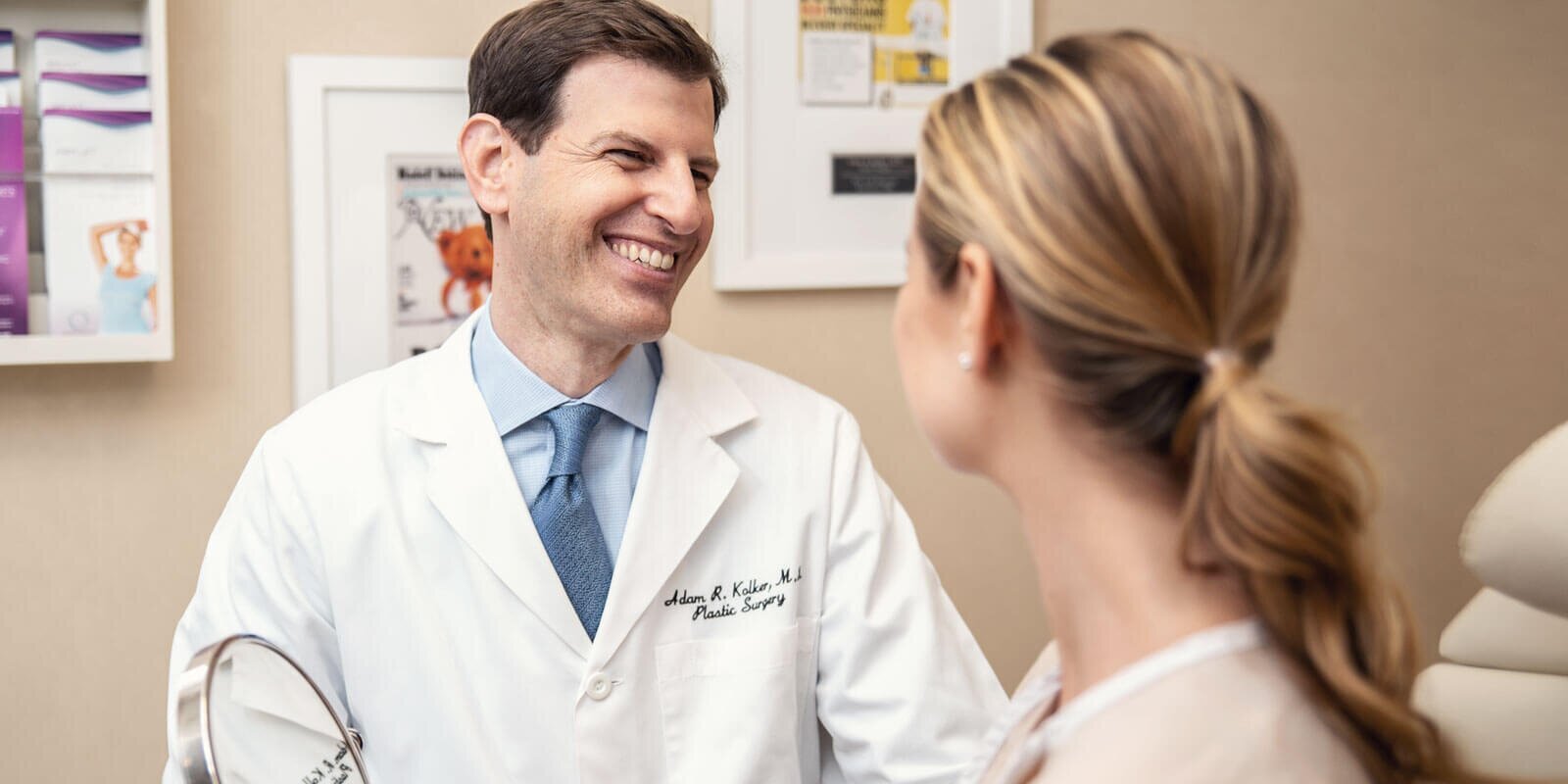How do I prepare for a Tummy Tuck Surgery?
As a rule, Dr. Kolker's approach to Tummy Tuck and abdominal contouring after pregnancy or weight loss is that of a "team effort": safety and aesthetics are maximized when you undertake a balanced, healthy diet and lifestyle choices along with a regimen of exercise and strength training, whereupon he will then firm, flatten, contour and sculpt to achieve the most beautiful results. In general, Dr. Kolker uses body mass index (BMI, a metric that estimates body fat and safety profiles based on height and weight) to assist in the determination of candidacy for surgery. An ideal BMI is reached at or below 25 kg/m2 both safety and anticipated cosmetic results are maximal. A BMI above 27.5 kg/m2 is a contraindication to surgery.
What is the Abdominoplasty procedure?
In Dr. Kolker's fully accredited surgical facility located on Park Avenue in Manhattan, New York City Tummy Tuck surgery is performed under general anesthesia. The office-based surgery suite is accredited by the AAAASF (American Association for the Accreditation of Ambulatory Surgery Facilities) and conforms to and exceeds the most stringent requirements for ambulatory surgery safety. The anesthesiologists are board-certified specialists. The procedure duration is approximately three hours.
What is recovery like?
Following your Tummy Tuck in New York at Dr. Kolker's office, you will be cared for in our recovery room by our licensed registered nurse, who will closely monitor you and attend to all comforts. Two closed suction drain tubes are used in most cases which remain in place for approximately seven days. No compressive binders are used. You will be discharged home the next morning with a friend or relative.
New York City Tummy Tuck Surgeon, Dr. Adam Kolker recommends taking two weeks off from work and strenuous activity, however on a select basis, return at 8 to 10 days may be possible. Resumption of light activities and lifting of light children begins at 7 to 10 days. As all sutures are dissolvable and placed beneath the skin surface, suture removal is not required. Swelling is generally present for approximately two weeks after tummy tuck, resolves substantially at six weeks, and final shape is reached approximately 12 weeks after abdominoplasty.
Can I excercise after a Tummy Tuck?
Light exercise (elliptical, walking, treadmill) can be resumed around 10 to 12 days, and more vigorous exercise resumes at four weeks (core strengthening exercise can be restarted after approximately six weeks).
What is the aftercare?
Dr. Kolker will see you several times during the first two weeks postop at his office in NYC, and then periodically throughout the first year. He will advise you on the timing of return to exercise and unrestricted activity, and will always be available to answer any questions or discuss any matters regarding recuperation and activities following the procedure.
How do I determine the best abdominoplasty technique for me?
In consideration of your specific physical needs, and your particular goals, Dr. Kolker will formulate a treatment plan, and advise you regarding the best tummy tuck procedure for you. No two tummy tucks are the same, and an abdominoplasty is much more than just removing excess skin and fat. To attain the safest and the most beautiful outcomes, it requires personalization, artistry, experience, delicacy, and adherence to the highest standards of certification and accreditation, and the tummy tuck surgeon you choose truly makes a difference. As a leading plastic surgeon with years of experience producing beautiful, natural-looking results, Dr. Kolker has achieved renown amongst his patients for providing some of the best Tummy Tucks New York has to offer. We invite you to schedule a consultation to discuss your tummy tuck with Dr. Kolker, and look forward to warmly welcoming you to our practice.



























































































































































































